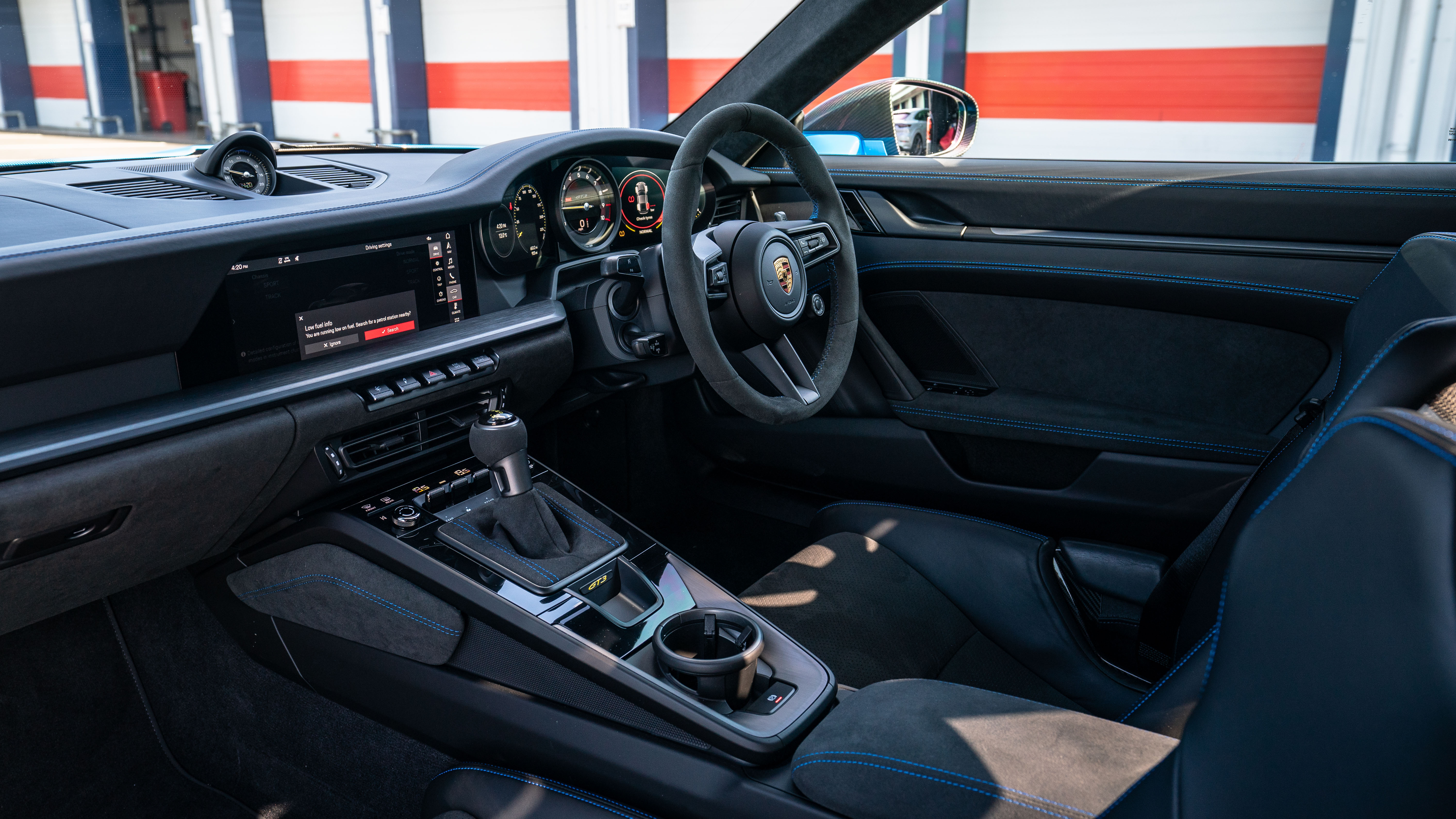
Driving
What is it like to drive?
Porsche has realised that horsepower inflation is the road to nowhere, and 500 is surely enough. It is enough. And here’s the latest 911 GT3 to ram home the point, strafing its 9,000rpm red-line with such conviction that this is a car that truly lives in the moment, and urges you to do the same. Porsche 911s enthral because they’re not like other cars. There are layers here like there are strata in ancient rock formations.
You’d expect a new GT3 to add a few more, and it does. Take the way its front end dissects corner entry, apex and exit. Usually a 911 strong point, it’s now served up in a manner that’s just cosmically brilliant. In fact, it’s so positive on the front axle that you briefly forget that the 911’s signature is the traction it summons up at the rear. Of course, it’s phenomenal in that respect too.
How do the tyres cope?
A big shout out to Michelin. These latest Pilot Sport Cup 2 tyres – 255/35 ZR20 and 315/30 ZR21 front/rear – are as good as anything this side of full-blown racing slicks are likely to get. There’s an optional ‘R’ spec tyre, and it was on this that the GT3 set a Nürburgring lap time of 6min 59 seconds, almost a full minute faster than the 996 GT3 managed 22 years ago.
We’re genuinely struggling to think of another car that turns in and grips the way this thing does, that communicates with such vocal intensity in every phase of a fast lap. The McLaren 600LT, perhaps, whose steering and chassis smarts atone for its lack of sonic drama. Not an issue the GT3 suffers from, needless to say.
There are faster, more flamboyant cars, but nothing can touch a track-optimised 911 for linearity and interactivity. It is, in every way, sensational. Dig deeper each lap into the fathomless depths of its chassis, dial up more and more revs, brake later and later (the ceramic composite brakes are 410mm diameter up front, 390mm at the rear and they’re stupendous), and it’s difficult to imagine how much more grip, balance and sheer speed you could conjure.
How’s the chassis balance?
There’s minimal understeer, oversteer only if you really go looking for it, but it’s the interplay between them that makes the GT3 so adjustable. Each end communicates what’s going on beautifully and there’s a total transparency in its responses. It’s difficult to separate the engine and chassis, each co-defining the other in the search for more layers of greatness. A high performance geological dig.
The GT3 has always been a bona fide track car, never more so than now. It uses the same double wishbone front suspension that Porsche’s Motorsport people developed for the 911 RSR racing car, which keeps more of the tyre’s contact patch on the road (or track) surface as the lateral forces build.
The upper and lower links are rose-jointed, and Porsche claims greater steering precision and improved camber stability. We can see why. There are rose joints in the active rear axle too, replacing the regular bushes in pursuit of ever greater control and harmony. Firmer spring rates and damping reduce roll, pitch and dive, while toe angle, camber and anti-roll bars are adjustable for track use.
And how about road use?
Porsche says its PASM tech has been recalibrated to give the GT3 the necessary amplitude to keep the thing on the island away from billiard table-smooth circuits. We’d respectfully suggest that this iteration is less useable on the road, and while its low-speed ride over gnarly surfaces is very good, it demands considerable concentration the faster you go. Still viable as a daily driver, sure, but not a car you can be absent-minded with. As if you’d ever want to be.
Variants We Have Tested
Trending this week
- Car Review
Porsche 911 GT3 (992.2)







